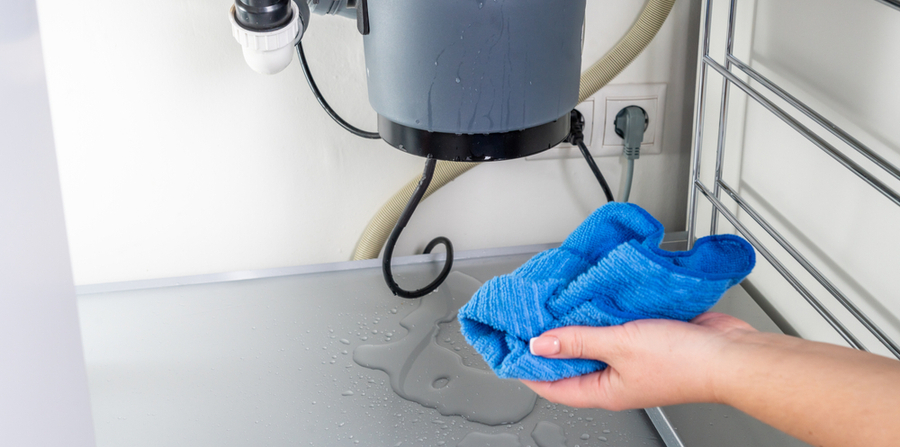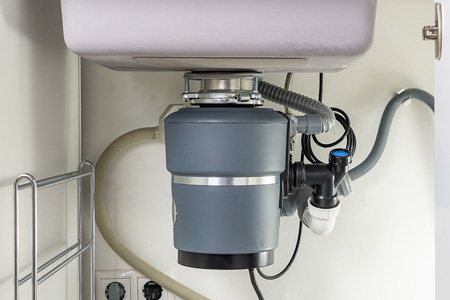Trusted Ways to Fix a Leaking Waste Disposal Unit
Trusted Ways to Fix a Leaking Waste Disposal Unit
Blog Article
Have you been looking for help and advice around How to fix a pretty consistent leak from my garbage disposal?

Garbage disposals are necessary cooking area home appliances that help in getting rid of food waste efficiently. However, a leaking waste disposal unit can be a frustrating and untidy problem to take care of. Fortunately, lots of leaks can be fixed conveniently with a few simple actions. In this article, we will go over just how to deal with a leaking garbage disposal effectively.
Intro
Garbage disposals are set up under cooking area sinks and are created to shred food waste into smaller sized items, permitting it to pass through the plumbing system easily. While these devices are typically reliable, leakages can happen over time as a result of damage, loosened links, or damage to the system.
Typical Root Causes Of Leaks in Waste Disposals
Worn Seals and Gaskets
Seals and gaskets play a vital role in protecting against water from dripping out of the garbage disposal. With time, these components can wear away, causing leaks around the disposal system.
Loose Connections
The links between the garbage disposal and the pipes system can end up being loosened in time, creating water to leakage out during operation.
Cracks or Holes in the Disposal Unit
Physical damages to the garbage disposal, such as cracks or holes in the housing, can additionally lead to leakages.
Identifying the Source of the Leakage
Prior to attempting to take care of a leaking garbage disposal, it is essential to identify the source of the leak. This can commonly be done via visual inspection or by performing simple tests.
Visual Assessment
Check the waste disposal unit unit carefully for any type of indicators of water leak. Pay very close attention to locations around seals, gaskets, and link factors.
Checking for Leaks
One means to test for leaks is by running water with the disposal system and looking for any noticeable indicators of leakage.
Tools and Materials Needed for Repairing a Leaking Garbage Disposal
Prior to beginning the repair service process, collect the essential devices and products, consisting of a screwdriver, flexible wrench, plumbing technician's putty, substitute seals or gaskets, and epoxy or patching material for repairing splits or openings.
Step-by-Step Overview to Dealing With a Leaking Garbage Disposal
Shut off the Power
Before attempting any kind of fixings, make certain that the power to the waste disposal unit device is switched off to prevent the risk of electrical shock.
Find the Leak
Recognize the specific place of the leak and establish the cause.
Tighten Links
Utilize a wrench to tighten any kind of loosened links in between the disposal unit and the pipes system.
Change Seals or Gaskets
If the leakage is due to worn seals or gaskets, eliminate the old parts and replace them with new ones.
Patching Cracks or Holes
For fractures or holes in the disposal system, usage epoxy or an ideal patching product to seal the damaged location.
Checking the Garbage Disposal After Fixing
When the repair is complete, examine the waste disposal unit by running water through it to make certain that the leak has actually been solved.
Preventive Upkeep Tips to Prevent Future Leakages
To prevent future leaks, it is important to do normal maintenance on your waste disposal unit. This consists of maintaining it clean, avoiding putting non-food items or hard objects down the disposal, and periodically looking for leakages or various other issues.
Verdict
To conclude, taking care of a leaking waste disposal unit is a reasonably straightforward process that can be finished with basic devices and materials. By following the actions detailed in this read more write-up and practicing precautionary maintenance, you can keep your waste disposal unit in good working condition and avoid pricey repair services in the future.
HERE’S HOW TO FIX YOUR GARBAGE DISPOSAL
WHAT TO DO IF SOMETHING IS STUCK IN YOUR GARBAGE DISPOSAL
If the impeller won’t turn, there’s probably something stuck in the disposal. It could be a steak bone or peach pit, although plumbers report pulling all sorts of inappropriate objects out of disposals, such as bottle caps or aluminum foil. Make sure power to the disposal is off, and look inside to see if you can see the source of the jam.
Never stick your fingers in a disposal. Pull out anything you see with tongs or pliers.
If the disposal still won’t work, it may be time to call a plumber or consider buying a new disposal. GEM Plumbing & Heating is here for all of your garbage disposal needs.
WHAT TO DO IF YOUR GARBAGE DISPOSAL DRAIN IS CLOGGED
Take everything out from underneath your sink and put a bucket or other container under your disposal to catch any water that drains out. Disconnect your disposal from the power supply. If it’s plugged into a wall outlet, unplug it. If it’s hardwired into an electrical box, go to the electrical panel and turn off the breaker for the disposal. Pour ¼ cup of baking soda into the drain, followed by ½ cup of white vinegar. Give the solution a few minutes to fizz and do its work. Look into the disposal with a flashlight to see if you can see an object that might be causing the clog. If you see it, remove it using tongs or pliers. MORE TIPS ON DEALING WITH A CLOGGED GARBAGE DISPOSAL
Never use drain cleaner in a garbage disposal. It can damage the plastic parts inside the disposal. You can also be splashed with the caustic liquid while working to clear the clog. Beware! Never stick your fingers into a garbage disposal. Trust us — not a good idea. In many instances, your dishwasher drains through your garbage disposal. This allows the disposal to grind any large food particles that may be drained out of your dishwasher. There are some jurisdictions, however, where the plumbing code prohibits such a connection. WHAT TO DO WHEN YOUR DISHWASHER DRAINS THROUGH THE DISPOSAL
Run some water in the sink so your plunger has at least a ½-inch of water to create a seal and plunge vigorously up and down several times. You may need to repeat this several times. Run hot water down the drain to clear any residue that remains.

Do you really like reading up on Why Is ? Place feedback directly below. We would be interested to hear your views about this write up. We are looking forward that you come back again in the future. In case you enjoyed reading our page if you please be sure to pass it around. Many thanks for your time spent reading it.
Set Up An Appointment Report this page